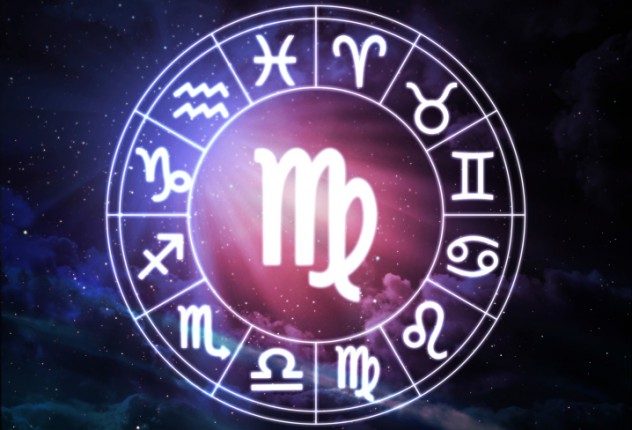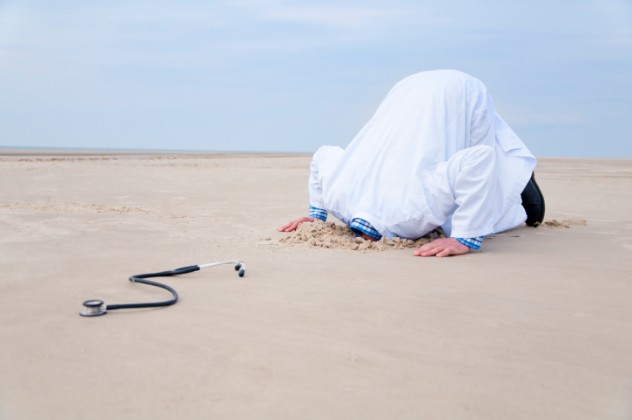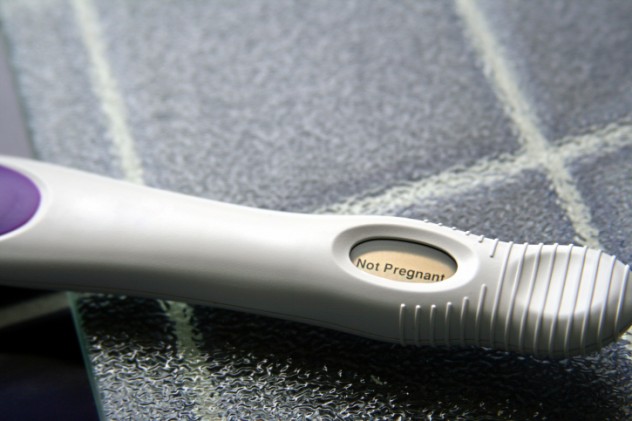 Weird Stuff
Weird Stuff  Weird Stuff
Weird Stuff  Mysteries
Mysteries 10 Tragic Disappearances and Deaths in Joshua Tree National Park
 History
History 10 Ways Childhood Really Sucked in the Old West
 Music
Music 10 Name Origins of Famous Bands from the 1990s
 Religion
Religion 10 Biggest Turnarounds by the Catholic Church
 Weird Stuff
Weird Stuff 10 Unbelievable Times Laws Had Unintended Consequences
 Humans
Humans Ten Historic Women Who Deserve Way More Credit Than They Got
 Movies and TV
Movies and TV 10 Films That Spawned Major Lawsuits
 History
History Ten Times Towns Were Wiped Off the Face of the Earth
 Creepy
Creepy 10 of the Most Disturbingly Haunted Public Houses in the UK
 Weird Stuff
Weird Stuff 10 Niche Subcultures That Are More Popular Than You Might Think
 Mysteries
Mysteries 10 Tragic Disappearances and Deaths in Joshua Tree National Park
 History
History 10 Ways Childhood Really Sucked in the Old West
Who's Behind Listverse?

Jamie Frater
Head Editor
Jamie founded Listverse due to an insatiable desire to share fascinating, obscure, and bizarre facts. He has been a guest speaker on numerous national radio and television stations and is a five time published author.
More About Us Music
Music 10 Name Origins of Famous Bands from the 1990s
 Religion
Religion 10 Biggest Turnarounds by the Catholic Church
 Weird Stuff
Weird Stuff 10 Unbelievable Times Laws Had Unintended Consequences
 Humans
Humans Ten Historic Women Who Deserve Way More Credit Than They Got
 Movies and TV
Movies and TV 10 Films That Spawned Major Lawsuits
 History
History Ten Times Towns Were Wiped Off the Face of the Earth
 Creepy
Creepy 10 of the Most Disturbingly Haunted Public Houses in the UK
10 Monumental Historical Misconceptions About The Female Body
If there’s one thing in the entire universe that is equally loved and misunderstood by men, it’s the female body. Throughout history women have had to contend with ridiculous wrong assumptions about their bodies due to sexism, religious fanaticism, or just plain old ignorance—and some of these bizarre beliefs about the anatomy of the fairer sex persist today.
10Menstrual Mysticism

While in the modern era we know menstruation to be a normal biological process, there were periods in history when it was viewed as an almost mystical process of either great good or great evil.
One belief about menstruation was that its main purpose was to keep a woman healthy by expelling the surplus or rotten blood from her body. Proponents of this belief argued that the blood was poisonous and could contaminate food or objects with which it came into contact. It was also a widely held view that a man should never impregnate a menstruating woman—the resulting offspring would be grotesquely deformed by the blood.
At the other end of the spectrum, Galen—one of the most prominent ancient physicians—spread the idea that blood from menstruation nourished the fetus inside the womb and was converted into breast milk after the child was born. Others believed that menstrual blood was imbued with healing properties. Practitioners of ancient Chinese medicine, viewed amenorrhea—the lack of menstruation—as a dangerous sickness, and concocted several “cures” for it.
9Clitoris As A Penis

You may have heard about Hippocrates’ hilariously insane belief about women’s wombs wandering inside their bodies, but have you have heard about the clitoris that could be used as a penis? That’s right, the ancient Greeks thought that women with particularly big clitorises could use them as penetrative appendages for intercourse. So prevalent was the belief that it carried over well into the 19th and 20th centuries, when American and European physicians also incorporated it into their study of lesbianism.
Perhaps one of the most vocal supporters of the existence of the “female penis” was Italian inquisitor Ludovico Sinistrari. As a priest and author who specialized in demonology and sexual sins, he stated that women who were overcome by lust could enlarge their clitorises and transform themselves into men. In a time where lesbianism was a crime punishable by death, Sinistrari made the odd postulation that such a crime could occur only if the accused successfully penetrated the other party with her clitoris, an argument that may have saved some lives. Nevertheless, Sinistrari advocated extreme punishment for those found guilty of the crime.
8Virgins Restore Youth

Shunamitism—the practice of an older man sleeping with a young, virgin girl without any sexual contact—took its name from the biblical story of King David. Worried for his health in his old age, his attendants found a beautiful virgin named Abishag of Shunam, who slept with him in his bed. While with no established medical rationale—although it has been speculated that it could raise testosterone levels in old men—shunamitism has been practiced in varying degrees by a variety of different cultures. A fourth-century doctor prescribed it for an upset stomach, while in 18th-century England it was believed that a virgin’s breath had health-giving properties. Across the Channel in the same period, the practice turned a profit for French entrepreneurs. One hostess named Madame Janus owned a house with fifty virgins who catered to rich old men, again without any sexual contact.
In India, a variation of shunamitism called Brachmarya has been in vogue for a long time, with its most famous practitioner being none other than Mahatma Gandhi.
7Education Weakens The Womb

In 1873 Edward Clarke, a doctor and former professor at Harvard Medical School, published his reasons why women shouldn’t be educated in his book Sex In Education; Or, A Fair Chance For The Girls. He asserted that since women were predestined to be propagators of the human race, education was of secondary importance. He pointed out that their brains were inferior to men’s and thus weren’t meant to handle higher levels of education. He also warned that those women who persisted in learning risked damaging their reproductive organs, especially if they were menstruating. For a time Clarke’s theory became a hot topic for debate and was frequently used as a bible by activists against women’s education. Eventually the theory faded away as more women flocked to colleges and universities and proved themselves as good as—or better than—their male peers.
6Aristotle’s Ideas

Being one of the greatest philosophers of all time apparently did not prevent Aristotle from making a whole list of mistakes about the female body. He believed that women were deformed men, with their genitals inside their bodies due to a lack of the “heat” needed to form a “perfect male body.” He also speculated that this disability prevented women from making semen and therefore they were passive recipients in the child-making process. Other gaffes included Aristotle’s declaration that women had fewer teeth and skull sutures than men, and his failure to distinguish the vagina from the urethra.
Aristotle equated his findings about the supposed inferiority of the female body to a justification for male dominance in all aspects of life. After his death, his views remained popular until the 15th century and contributed hugely to the prevalent chauvinism of the era.
5Breasts As Armor
 In a letter he wrote to the French King in the 14th century, Royal Physician Henri De Mondeville gave three reasons for the specific placement of the breasts. First, the breasts were located on the chest so they could be more easily viewed by men. Next, the breasts had a mutually beneficial relationship with the heart—they strengthened and kept each other warm. Finally, the doctor claimed that breasts, particularly large ones, kept the chest warm and served as a weight that helped to maintain a woman’s abdominal strength.
In a letter he wrote to the French King in the 14th century, Royal Physician Henri De Mondeville gave three reasons for the specific placement of the breasts. First, the breasts were located on the chest so they could be more easily viewed by men. Next, the breasts had a mutually beneficial relationship with the heart—they strengthened and kept each other warm. Finally, the doctor claimed that breasts, particularly large ones, kept the chest warm and served as a weight that helped to maintain a woman’s abdominal strength.
In 1840, English physician Astley Cooper claimed that large breasts greatly benefited women from the lower rungs of society—they enabled them “to bear the very severe blows which they often received in their drunken pugilistic contests.”
4Myth Of Maternal Impressions

Although it has been discussed in a previous list, the idea of maternal impression is too outlandish not to include here. Maternal impression was the notion that a mother’s imagination, triggered by internal or external stimuli, could mentally influence the growth and development of her unborn child. The exact origins of this belief are hard to trace, although it had been alleged that Hippocrates and most of the ancient Greeks were believers. The Romans also adhered to this concept and reasoned that a child’s birthmark was the result of its mother’s emotional and mental trauma.
The belief persevered throughout history, with several reported cases of babies who were deformed or looked like animals. In one such extraordinary case—later proved to be a hoax—a woman named Mary Toft allegedly gave birth to rabbits after she craved rabbit and dreamed of eating them. Although the concept was largely abandoned in the 20th century, a good number of people continue to hold on to the belief today thanks to a handful of seemingly inexplicable cases.
3Driving Destroys The Ovaries

Pretty much the rest of the world rolled their eyes when, in September 2013, a prominent Saudi cleric announced that driving was harmful to women’s health. In a bid to counter a planned driving protest by women activists, Sheikh Saleh Al-Loheidan said that studies have shown that women who drive could damage their ovaries and displace their pelvises. He added that these women risked having children with birth defects.
Al-Loheidan’s comments quickly became controversial worldwide—a Twitter hashtag titled “#WomensDrivingAffectsOvariesAndPelvises” made his statements go viral across the Internet amid endless mockery and criticism. Even his own countrymen expressed their disbelief at his remarks, with one calling them “ridiculous.” Mohammad Baknah, a Saudi gynaecologist, later challenged Al-Loheidan’s statements and countered that there were no such studies.
In Al-Lohaidan’s defense, his bizarre view about women driving wasn’t the first—nor will it be the last—to garner such scrutiny. In 2010, another Saudi cleric caused a ruckus when he issued a a fatwa that said women could breastfeed their drivers to formally make them part of the family.
2Horizontal Vaginas

No one knows exactly when the myth began that Asian women—particularly Chinese, Japanese, and Korean women—had horizontal vaginas. One of the earliest-known accounts of the myth was recorded in 1816, when French naturalist George Cuvier theorized that female genitals differed and that the vaginas of Chinese women were positioned horizontally. During the 1880s, author JW Buel went to San Francisco, where he did extensive research on the Chinese women living in Chinatown and concluded that they were anatomically normal. However, the horizontal vagina myth became prevalent once again during the Second World War and the Korean War, thanks to American soldiers stationed overseas who spread tales about their supposed encounters with such women.
Unfortunately, Asian women weren’t the only ones to suffer this grievous misconception. Early European anti-Semites believed the tale that Jewish women were bestial with horizontal vaginas and gestated their children in just six months.
1Rape Victims Can’t Get Pregnant

The very idea that women cannot get pregnant as a result of rape traces its roots to Galen. He believed that, like men, women produced “seed” necessary to make a child and released it only upon orgasm. By that logic, women who were raped were seen as incapable of producing this “seed” and therefore unable to get pregnant.
Galen’s “seed” theory remained firmly entrenched in later time periods. One legal text in Medieval England read, “If however, the woman should have conceived at the time alleged in the appeal, it abates, for, without a woman’s consent she could not conceive.” In short, the legal system saw rape victims who got pregnant as willing participants in the act.
Amazingly, even in this day and age it seems Galen still has plenty of supporters. Just this year Representative Trent Franks of Arizona remarked that “the incidence of rape resulting in pregnancy is very low,” a statement that drew criticism for its gross insensitivity. The previous year, Missouri Representative and senatorial candidate Todd Aiken received heavy criticism for his remark that women couldn’t get pregnant from “legitimate rape.”
Marc V. is always open for a conversation, so do drop him a line sometime.








